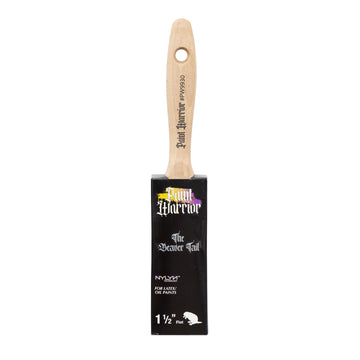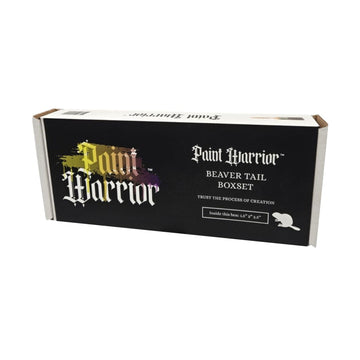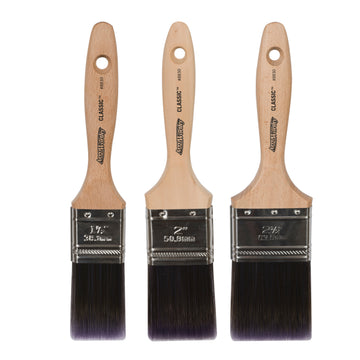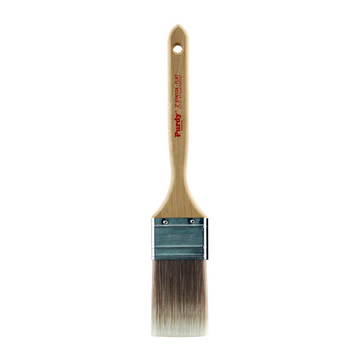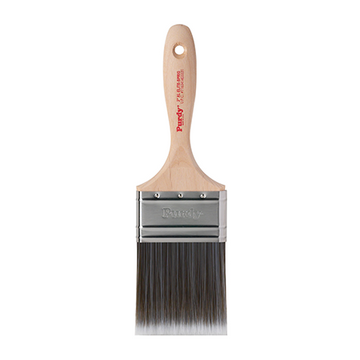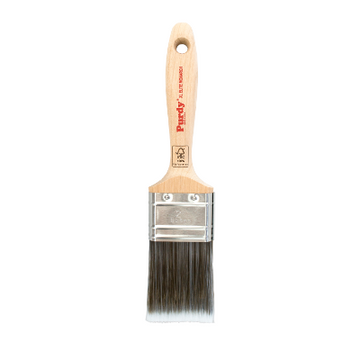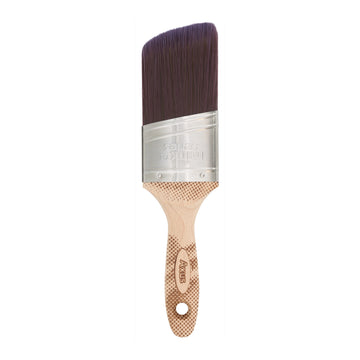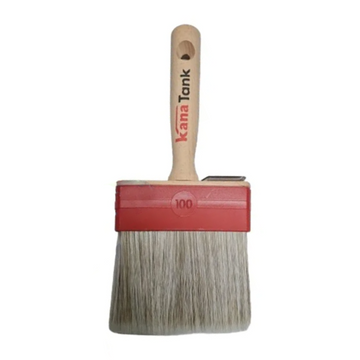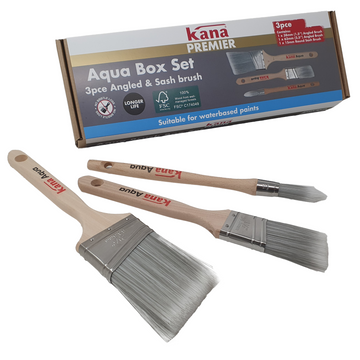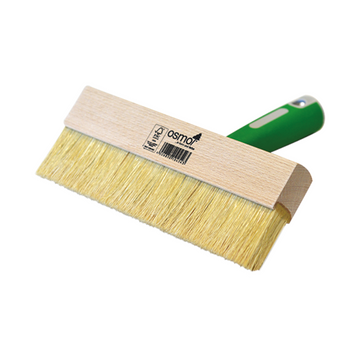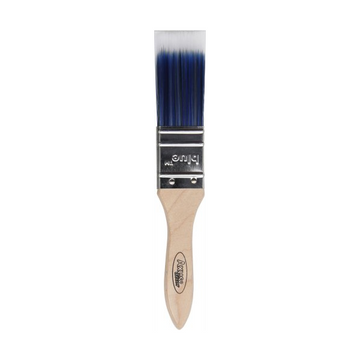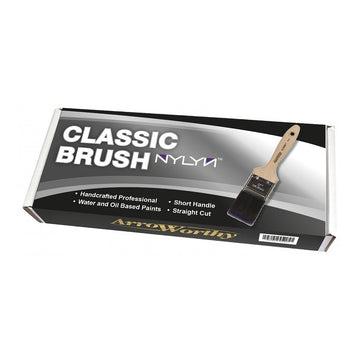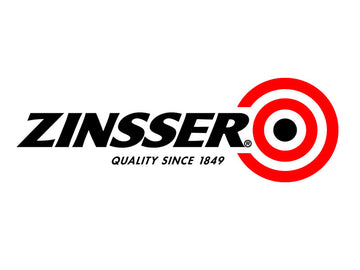Paint Application Methods
Filter By
Regular price
From £9.88
Inc VAT
Sale price
From £9.88
Inc VAT
Regular price
Unit price
/
From £8.23 Exc VAT
The Paint Warrior Flat Beaver Tail Brush is designed to deliver reliable, high-quality results, especially...
Regular price
£30.84
Inc VAT
Sale price
£30.84
Inc VAT
Regular price
Unit price
/
£25.70 Exc VAT
The Paint Warrior Beaver Tail Brush Set is designed for professional painters seeking a comprehensive...
Regular price
From £6.72
Inc VAT
Sale price
From £6.72
Inc VAT
Regular price
Unit price
/
From £5.60 Exc VAT
The Arroworthy Flat Beaver Tail Brushes are designed for professional painters seeking high-quality tools that...
Regular price
From £7.92
Inc VAT
Sale price
From £7.92
Inc VAT
Regular price
Unit price
/
From £6.60 Exc VAT
The Arroworthy Oval Beaver Tail Brush is a high-quality paintbrush designed to offer precision, comfort,...
Regular price
£22.69
Inc VAT
Sale price
£22.69
Inc VAT
Regular price
Unit price
/
£18.91 Exc VAT
The Purdy Syntox Flat Brush is an exceptional tool for achieving a superior, ultra-smooth finish...
Regular price
£15.05
Inc VAT
Sale price
£15.05
Inc VAT
Regular price
Unit price
/
£12.54 Exc VAT
The Purdy Sprig Elite is a premium paintbrush designed for professionals and DIY enthusiasts who...
Regular price
From £15.14
Inc VAT
Sale price
From £15.14
Inc VAT
Regular price
Unit price
/
From £12.62 Exc VAT
The Purdy Monarch Elite is a high-performance paintbrush designed to deliver superior results, allowing you...
Regular price
£9.64
Inc VAT
Sale price
£9.64
Inc VAT
Regular price
Unit price
/
£8.03 Exc VAT
The Axus Silk Touch Ultra Angled Stubby Brush represents the pinnacle of modern brush design,...
Regular price
£18.16
Inc VAT
Sale price
£18.16
Inc VAT
Regular price
Unit price
/
£15.13 Exc VAT
Kana Aqua Brushes are renowned for their superior performance in paint loading, release, and coverage....
Regular price
From £22.70
Inc VAT
Sale price
From £22.70
Inc VAT
Regular price
Unit price
/
From £18.92 Exc VAT
Kana Aqua Brushes are renowned for their superior performance in paint loading, release, and coverage....
Regular price
£15.38
Inc VAT
Sale price
£15.38
Inc VAT
Regular price
Unit price
/
£12.82 Exc VAT
Kana Aqua Brushes are renowned for their superior performance in paint loading, release, and coverage....
Regular price
£46.98
Inc VAT
Sale price
£46.98
Inc VAT
Regular price
Unit price
/
£39.15 Exc VAT
Experience the epitome of natural hair bristles, skilfully paired with a durable beech wood construction...
Regular price
£3.94
Inc VAT
Sale price
£3.94
Inc VAT
Regular price
Unit price
/
£3.28 Exc VAT
Axus Blue Series Sample Pot Brushes are designed specifically for applying sample paints and achieving...
Regular price
£25.07
Inc VAT
Sale price
£25.07
Inc VAT
Regular price
Unit price
/
£20.89 Exc VAT
Arroworthy Straight Short Handle Brush Set is a symbol of meticulous craftsmanship and unwavering professionalism....
Sort by
- Featured
- Best selling
- Alphabetically, A-Z
- Alphabetically, Z-A
- Price, low to high
- Price, high to low
- Date, old to new
- Date, new to old
Application
There are several methods for applying paint, each with its own advantages and suitable applications. The choice of technique depends on the type of surface, the desired finish, and the tools available.
- Brushing: Painting with brushes is a versatile method, suitable for both small and large surfaces. It provides good control for intricate details and trim work. Select brushes with the appropriate bristle type for your paint (e.g., synthetic for water-based paint and natural for oil-based paint) for the best results.
- Rolling: Roller application is efficient for covering large, flat areas like walls and ceilings. It offers a uniform finish, and you can choose from various roller nap lengths to achieve different textures. Be sure to use an extension pole for hard-to-reach areas.
- Spraying: Spray guns are ideal for achieving a smooth, even coat on extensive surfaces. They are commonly used for automotive and furniture painting. However, they require more skill and may involve masking off areas to prevent overspray.
- Filling Knives & Caulkers: Filling knives and caulkers are versatile tools used for applying fillers, sealants, and caulk with precision, ensuring smooth and even surfaces while sealing gaps or imperfections effectively.
Each method has its own set of advantages, so selecting the right one depends on your specific project requirements and personal preference. Be sure to prepare and prime the surface appropriately for the best results, and always work in a well-ventilated area while following safety precautions.


